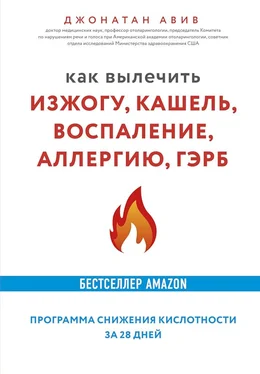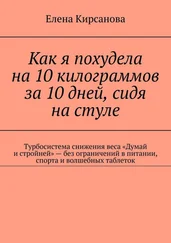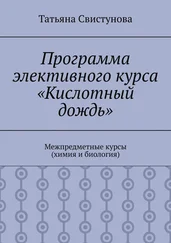Rahman, K. Studies on Free Radicals, Antioxidants, and Co-Factors. Clinical Interventions in Aging 2, no. 2 (2007): 219–236.
Shahteen, N., G.W. Falk et al. ACG Clinical Guideline: Diagnosis and Management of Barrett’s Esophagus. American Journal of Gastroenterology (2015). doi:10.1038/ajg.2015.322.
ГЛАВА 4. ОБРАЩЕНИЕ ЗА МЕДИЦИНСКОЙ ПОМОЩЬЮ: ЧТО ВЫ ДОЛЖНЫ ЗНАТЬ ПЕРЕД ВИЗИТОМ К ВРАЧУ С ЖАЛОБАМИ НА ГОРЛО
Aisenberg J., J.V. Brill et al. Sedation for Gastrointestinal Endoscopy: New Practices, New Economics. American Journal of Gastroenterology 100, no. 5 (2005): 996–1000.
Al-Awabdy, B., and C.M. Wilcox. Use of Anesthesia on the Rise in Gastrointestinal Endoscopy. World Journal of Gastrointestinal Endoscopy 16, no. 5 (2013): 1–5.
Altman, K., C.B. Simpson et al. Cough and Paradoxical Vocal Fold Motion. Otolaryngology Head and Neck Surgery 127, no. 6 (2002): 501–511.
Aviv, J.E.. Transnasal Esophagoscopy: State of the Art. Otolaryngology Head and Neck Surgery 135, no. 4 (2006): 616–619.
Aviv, J.E., T. Takoudes et al. Office-Based Esophagoscopy: A Preliminary Report. Otolaryngology Head and Neck Surgery 125, no. 3 (2001): 170–175.
Aviv, J.E., and L.F. Johnson. Flexible Endoscopic Evaluation of Swallowing with Sensory Testing (FEESST) to Diagnose and Manage Patients with Pharyngeal Dysphagia. Practical Gastroenterology 24 (2000): 52–59.
Aviv, J.E., M. Parides et al. Endoscopic Evaluation of Swallowing as an Alternative to 24-Hour pH Monitoring to Diagnose Extra-Esophageal Reflux. Annals of Otology, Rhinology and Laryngology 109, suppl. 184 (2000): 25–27.
Christopher, K.L., R.P. Wood II et al. Vocal-Cord Dysfunction Presenting as Asthma. New England Journal of Medicine 308, no. 26 (1983): 1566–1570.
Cohen, L., M. DeLegge et al. AGA Institute Review of Endoscopic Sedation. Gastroenterology 133, no. 2 (2007): 675–701.
Cohen, L.B., and A.A. Benson. Issues in Endoscopic Sedation. Gastroenterology and Hepatology 5, no. 8 (2009): 565–570.
Enestvedt, B.K., G.M. Eisen et al. Is the American Society of Anesthesiologists Classification Useful in Risk Stratification for Endoscopic Procedures? Gastrointestinal Endoscopy 77, no. 3 (2013): 464–471.
Harding, S.M., and J.E. Richter. The Role of Gastroesophageal Reflux in Chronic Cough and Asthma. Chest 111, no. 5 (1997): 1389–1402.
Lee, B., and P. Woo. Chronic Cough as a Sign of Laryngeal Sensory Neuropathy: Diagnosis and Treatment. Annals of Otology, Rhinology and Laryngology 114, no. 4 (2005): 253–257.
Liu, H., D.A. Waxman et al. Utilization of Anesthesia Services during Outpatient Endoscopies and Colonoscopies and Associated Spending in 2003–2009. Journal of the American Medical Association 307, no. 11 (2012): 1178–1184.
McQuaid, K., L. Laine. A Systematic Review and Meta-Analysis of Randomized, Controlled Trials of Moderate Sedation for Routine Endoscopic Procedures. Gastrointestinal Endoscopy 67, no. 6 (2008): 910–923.
Mintz, S., J.K. Lee. Gabapentin in the Treatment of Intractable Chronic Cough: Case Reports. American Journal of Medicine 119, no. 5 (2006):13–15.
Mishriki, Y.Y. Laryngeal Neuropathy as a Cause of Chronic Intractable Cough. American Journal of Medicine 120, no. 2 (2007): 5–7.
Morrison, M., L. Rammage et al. The Irritable Larynx Syndrome. Journal of Voice 13, no. 3 (1999): 447–455.
Murry, T., R. Branski et al. Laryngeal Sensory Deficits in Patients with Chronic Cough and Paradoxical Vocal Fold Movement Disorder. Laryngoscope 120, no. 8 (2010): 1576–1581.
Murry, T., C. Sapienza. The Role of Voice Therapy in the Management of Paradoxical Vocal Fold Motion, Chronic Cough, and Laryngospasm. Otolaryngology Clinics of North America 43, no. 1 (2010): 73–83.
Murry, T., A. Tabaee et al. Respiratory Retraining of Refractory Cough and Laryngopharyngeal Reflux in Patients with Paradoxical Vocal Fold Movement Disorder. Laryngoscope 114, no. 8 (2004): 1341–1345.
Murry, T., A. Tabaee et al. Respiratory Retraining Therapy and Management of Laryngopharyngeal Reflux in the Treatment of Patients with Cough and Paradoxical Vocal Fold Movement Disorder. Annals of Otology, Rhinology and Laryngology 115, no. 10 (2006): 754–758.
Newman, K.B., U.G. Mason III et al. Clinical Features of Vocal Cord Dysfunction. American Journal of Respiratory and Critical Care Medicine 152, no. 4 (1995): 1382–1386.
Petrini, J., J. Egan. Risk Management Regarding Sedation/Analgesia. Gastrointestinal Endoscopic Clinicians of North America 14, no. 2 (2004): 401–414.
Phua, S.Y., L.P. McGarvey et al. Patients with Gastro-Esophageal Reflux Disease and Cough Have Impaired Laryngopharyngeal Mechanosensitivity. Thorax 60, no. 6: 488–491.
Rex, D.K., V.P. Deenadayalu et al. Endoscopist-Directed Administration of Propofol: A Worldwide Safety Experience. Gastroenterology 137, no. 4 (2009): 1229–1237.
Rogers, J.H., P.M. Stell. Paradoxical Movement of the Vocal Cords as a Cause of Stridor. Journal of Laryngology and Otology 92, no. 2 (1978): 157–158.
U.S. Preventive Services Task Force. Screening for Colorectal Cancer: U.S. Preventive Services Task Force Recommendation Statement. AHRQ Publication 08-05124-EF-3. Rockville, MD: Agency for Healthcare Research and Quality, 2008.
Vargo, J.J., L.B. Cohen et al. Position Statement: Nonanesthesiologist Administration of Propofol for GI Endoscopy. American Journal of Gastroenterology 104, no. 12 (2009): 2886–2892.
Vertigan, A.E., D.G. Theodoros et al. The Relationship between Chronic Cough and Paradoxical Vocal Fold Movement: A Review of the Literature. Journal of Voice 20, no. 3 (2006): 466–480.
Wani, MK, and GE Woodson. Paroxysmal Laryngospasm after Laryngeal Nerve Injury. Laryngoscope 109, no. 5 (1999): 694–697.
ГЛАВА 5. РОЛЬ БЕЛКОВ, УГЛЕВОДОВ И ЖИРОВ ПРИ ЛЕЧЕНИИ КИСЛОТНОГО ПОВРЕЖДЕНИЯ ТКАНЕЙ
Basson, M. Gut Mucosal Healing: Is the Science Relevant? American Journal of Pathology 161, no 4 (2002): 1101–1105.
Berry, W., M. Pollan. Bringing It to the Table: On Farming and Food. Berkeley, CA: Counterpoint Press, 2009.
Donaghue, K., M. Pena et al. Beneficial Effects of Increasing Monounsaturated Fat Intake in Adolescents with Type 1 Diabetes. Diabetes Research and Clinical Practice 48, no. 3 (2000): 193–199.
Dukan, P. The Dukan Diet: 2 Steps to Lose the Weight, 2 Steps to Keep It Off Forever. New York: Crown, 2011.
El-Serag, H., J. Satia et al. Dietary Intake and the Risk of Gastro-Esophageal Reflux Disease: A Cross Sectional Study in Volunteers. Gut 54, no. 1 (2005): 11–17.
Esselstyn, C. Prevent and Reverse Heart Disease: The Revolutionary, Scientifically Proven, Nutrition-Based Cure. New York: Penguin, 2007.
Food and Nutrition Board, Institute of Medicine of the National Academies. Dietary Reference Intakes for Energy, Carbohydrate, Fiber, Fat, Fatty Acids, Cholesterol, Protein, and Amino Acids. Washington, DC: National Academies Press, 2005.
Gates, D., L. Schrecengost. The Baby Boomer Diet: Body Ecology’s Guide to Growing Younger. Carlsbad, CA: Hay House, 2011.
Hernandez-Alonse, P., J. Salas-Salvado et al. High Dietary Protein Intake Is Associated with an Increased Body Weight and Total Death Risk. Clinical Nutrition 35, no. 2 (2016): 496–506.
Rybicki, S. The Importance of HUFAs in Fish Food. Accessed June 20, 2016. http://www.angelsplus.com/ArticleHufa.htm.
Savarino, E., N. de Bortoli et al. Alginate Controls Heartburn in Patients with Erosive and Nonerosive Reflux Disease. World Journal of Gastroenterology 18, no. 32 (2012): 4371–4378.
Simopoulos, A. The Importance of the Omega-6/Omega-3 Fatty Acid Ratio in Cardiovascular Disease and Other Chronic Diseases. Experimental Biology and Medicine 233, no. 6 (2008): 674–688.
Читать дальше
Конец ознакомительного отрывка
Купить книгу












